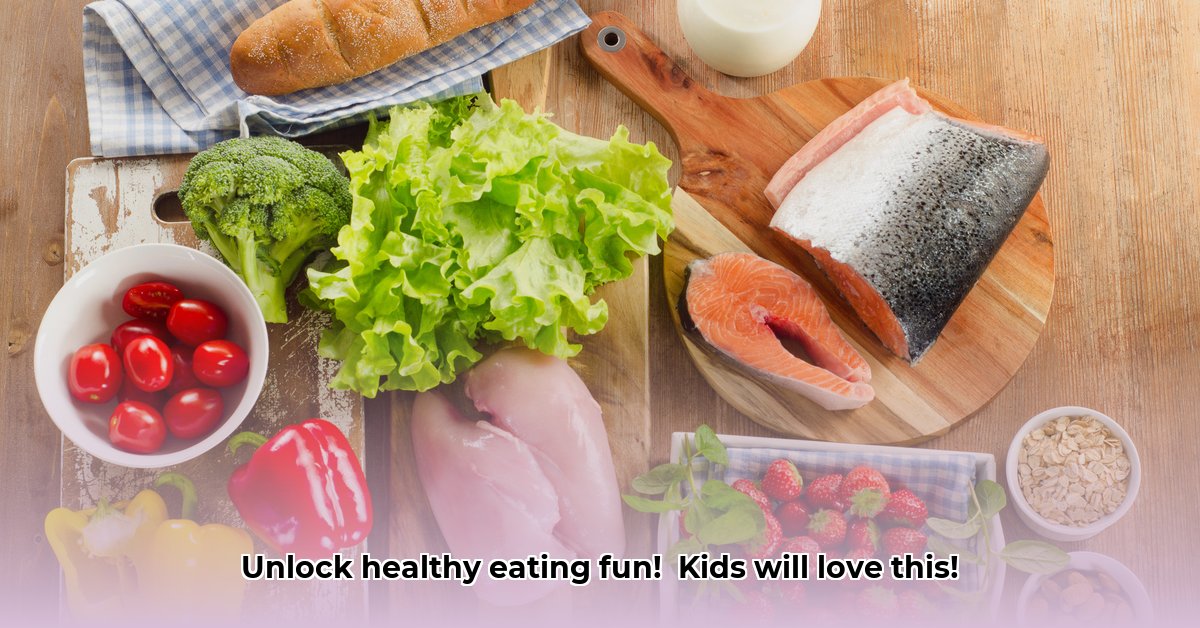Let’s face it: teaching kids about healthy eating can be tough. But what if learning about fruits, veggies, and all the good stuff could be as exciting as a treasure hunt? This guide shows you how word searches can make nutrition fun and effective for kids. We’ll help you create awesome word puzzles, explain why they work so well, and show you how to easily fit them into your daily routines, whether you’re a teacher or a parent. For more engaging ideas, check out these fun activities. Get ready to discover a simple yet powerful way to make learning about healthy eating a breeze—and something kids actually enjoy!
Unlock the Potential: Healthy Eating Word Search Wonders
Making healthy eating fun for kids can be tricky, but what if learning about nutrition could be an adventure? That’s where healthy eating word searches come in! These aren’t just games; they’re an effective way to introduce kids to nutritious food choices and make learning memorable. Think of them as a fun way to slip healthy habits into playtime while improving nutritional awareness!
The Power of Playful Learning: Making Nutrition Stick
Word searches aren’t just a fun distraction; they’re surprisingly effective learning tools. They naturally boost vocabulary, reinforce what kids are learning about food, and make learning interactive. Studies show that hands-on activities, like word searches, enhance the learning experience, increasing knowledge retention. Kids are more likely to remember information when they actively participate. A healthy eating word search perfectly fits this learning style; it’s both engaging and educational. It can be a fantastic way to make nutrition education fun and stick in a child’s mind, promoting lasting healthy choices. They’re not just passively receiving information – they’re actively hunting for it!
Designing Your Word Search Adventure: A Step-by-Step Guide
Ready to create your own healthy eating word search? It’s easier than you might think, and you can tailor it perfectly to your child’s age! Here’s how, broken down into easy-to-follow steps:
Step 1: Choose Your Words Wisely
Begin by picking key words related to healthy foods, focusing on fruits, vegetables, proteins, and dairy. For younger children, keep it straightforward with simpler words like “apple” or “banana.” Older kids can handle more complex terms such as “vitamins” (organic compounds that are essential micronutrients), “minerals” (inorganic substances needed by the human body for health), or even “carbohydrates” (the body’s primary source of energy). The key is to choose words that are relevant to their current knowledge and learning level. Consider including a mix of common and slightly less familiar terms to expand their food vocabulary.
Step 2: Pick Your Puzzle Platform
You have options! You can create a word search by hand – it’s a great way to get creative and personalized! Or, you can use one of the many free online word search generators available. These websites offer templates and tools to make the process quick and easy. Some popular options include WordMint, My Word Search, and PuzzleFast. These platforms often allow you to customize the size of the grid, the font, and even the direction in which words can be hidden.
Step 3: Spice Up the Visuals
Make your healthy eating word search visually appealing, catching the eye with engaging colors! Use bright colors—think sunshine yellows, vibrant greens, and juicy reds. Use fun, legible fonts, and consider adding pictures of the healthy foods themselves. A visually engaging puzzle will captivate children and keep them interested, promoting sustained focus. A boring-looking puzzle will likely be abandoned before it’s even started. Consider adding a border with images of fruits and vegetables or using a colorful background to make the puzzle more inviting.
Step 4: Adjust the Difficulty: Matching the Search to the Age
The difficulty level should match the child’s age and capabilities. Younger children need simpler puzzles with larger fonts and fewer words. Older children can handle more challenging puzzles—more words, smaller fonts, words hidden diagonally, backward, or even upside down! Vary the length of the words used. Include both short and long words to add complexity and maintain interest.
Here’s a helpful guide, outlining tailored approaches to healthy educational engagement:
| Age Group | Word Examples | Difficulty Level | Visual Enhancements | Puzzle Size |
|---|---|---|---|---|
| Preschool (3-5) | apple, banana, milk, cheese, carrot, orange | Easy | Large, clear fonts, many colorful pictures | 8×8 or 10×10 |
| Elementary (6-8) | vegetables, protein, vitamin C, yogurt, berries | Medium | Bold fonts, images of food groups | 12×12 or 15×15 |
| Middle School (9-12) | carbohydrates, antioxidants, fiber, calcium, iron | Hard | Sophisticated design, themed images | 15×15 or 20×20 |
Beyond the Puzzle: Integrating Word Searches into Your Healthy Eating Strategy
Remember, a healthy eating word search is just one part of a bigger picture; it is a component of a comprehensive approach. To make a real difference, integrate it into a more comprehensive strategy. It’s about creating a consistent, positive association between learning and healthy eating.
- Classroom Fun: Use word searches as a warm-up activity before a lesson on nutrition, or as a reward for good work.
- Family Night Fun: Make it a family activity! Parents can participate, creating a shared learning experience and showing kids that healthy eating is important to the whole family.
- Community Events: Incorporate healthy eating word searches into school health fairs or community events to reach a wider audience.
- Hands-on Learning: After completing a word search, extend the learning with hands-on activities. Have kids draw their favorite healthy foods, prepare a simple healthy snack together, or even visit a local farmers market.
Checking In: How Effective Was Your Word Search?
Gauge the children’s engagement and enthusiasm! Observe their interest levels, and ask simple questions about the words they found. You could even create a short quiz about the words.
Remember, consistency is a key ingredient for success. Regularly incorporating fun activities like healthy eating word searches can help children build healthy eating habits over the long term.
Looking Ahead: Further Exploration
While word searches are a fun and engaging tool, remember they’re just one part of a broader approach to healthy eating education. Explore additional resources online and in your community to support your efforts. Consider incorporating books, videos, and interactive games to create a well-rounded learning experience.
How to Engage Preschoolers in Healthy Eating Activities
Key Takeaways:
- Making nutrition education fun is key to success.
- Interactive activities, like word searches, are highly effective.
- Word searches reinforce vocabulary and nutritional knowledge.
- Integrating word searches with other activities creates a holistic approach.
- Tailoring the difficulty and visual appeal to the age group is essential.
The Power of Word Searches for Little Learners
Want to make learning enjoyable, while still being educational? Word searches are a fantastic way to sneak in some nutrition education! They’re engaging, fun, and subtly build healthy eating vocabulary. Preschoolers love puzzles, and this taps into their natural curiosity.
Crafting a Winning Word Search
Creating an effective word search is easier than you think! Keep it simple, focusing on core nutritional words like “fruits,” “vegetables,” and “milk.” Use bright colors and fun images to make it visually appealing. Consider the age group – shorter words for younger preschoolers and longer words, or even phrases, for older ones. Here’s a simple framework:
- Choose your words: Select 8-12 easy-to-read words related to healthy foods.
- Create your grid: A 10×10 grid works well for preschoolers.
- Hide the words: Weave the words horizontally, vertically, and diagonally.
- Add some flair: Use bright colors, simple graphics, or even a thematic border.
Example Word List:
- Apple
- Banana
- Carrot
- Grapes
- Milk
- Orange
- Peas
- Strawberry
- Yogurt
Integrating Word Searches into Your Nutrition Strategy
Don’t think of a word search as a standalone activity. Incorporate it into a broader strategy, ensuring comprehensive learning. This can mean:
- Using it as a pre- or post-activity for a cooking class.
- Pairing it with a taste test of some of the foods featured in the puzzle.
- Making it part of a weekly theme around healthy eating.
Assessing the Impact
You can gauge the success of your word search strategy in several ways. Observe the children’s engagement – are they having fun? Do they remember the words afterwards? Simple quizzes or discussions can also be beneficial.
- Your Go-To Chicken Thigh Meal Prep for Easy, Flavorful Dishes - November 24, 2025
- Easy Bulking Meal Prep Recipes to Fuel Your Muscle Gains - November 23, 2025
- Great Bulking Dinner Ideas For Flavorful Muscle-Building Meals - November 22, 2025










